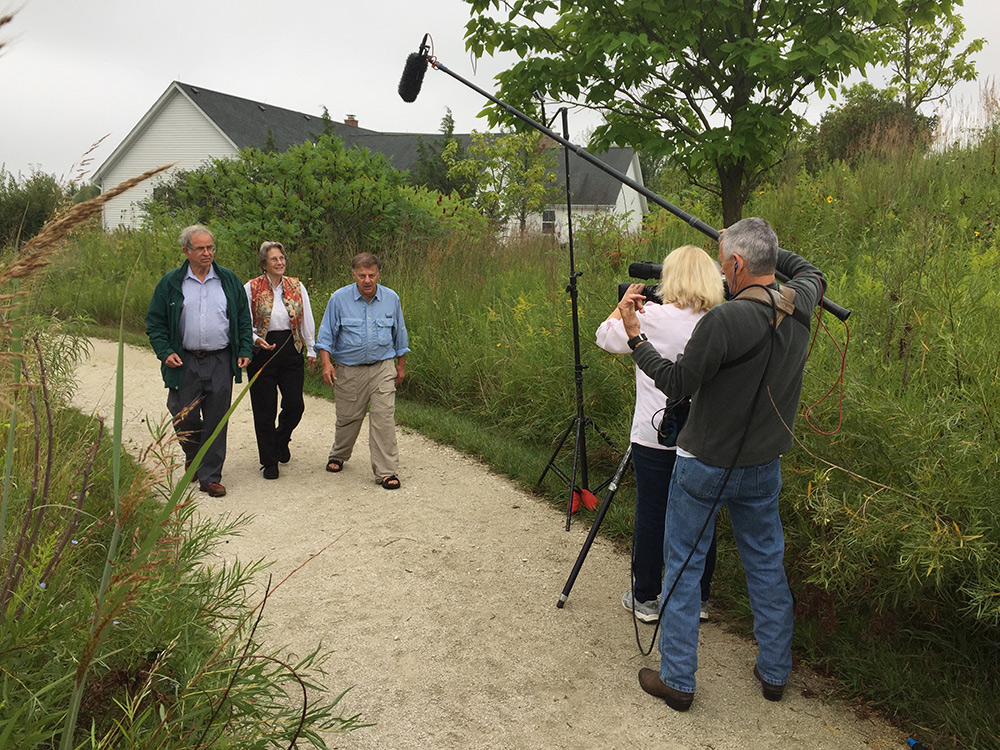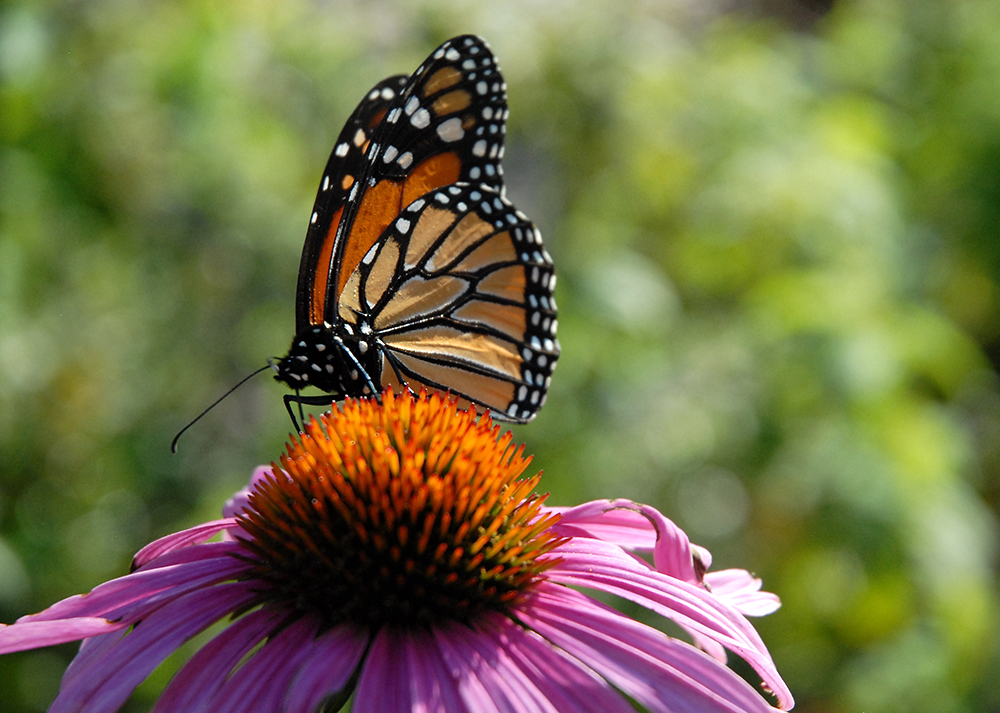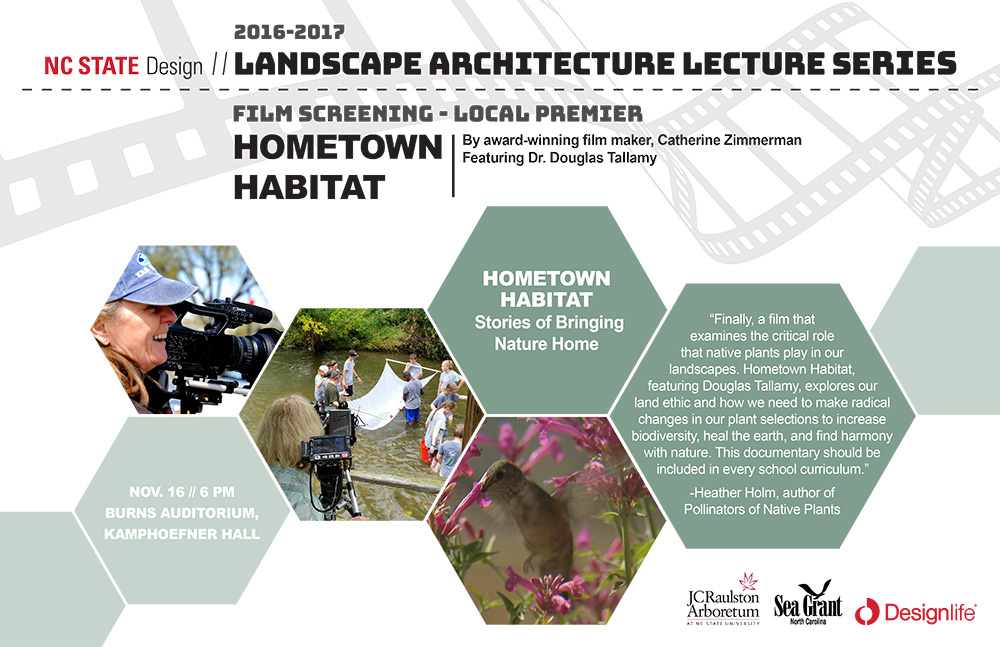
Obedient plant, Physostegia virginiana, is native to North America, from Canada to Florida. Courtesy Hometown Habitat
Find the nearest window and look outside. Hopefully, you can see some green within your view.
Take a closer look at those verdant parts and think about how those trees, shrubs or herbs came to occupy that landscape.
Some of the plants may be native, species that evolved to live there over time. Others may have traveled long distances by accident — or by design, planted on purpose for characteristics like their beauty or hardiness.

Zimmerman spent two years filming projects across the United States. Courtesy Hometown Habitat
Nonnative plants do not all come in peace. If they have a hard time fitting into their new surroundings, they can disrupt the local food web. If they fit in too well — lacking the competitors, diseases and insects that control native plants — they become invasive, displacing native plants and throwing ecosystems off-balance. These alien invaders have spread across North Carolina, and include common landscaping species like Bradford pear trees, privet and English ivy.
Against these almost supernatural villains, native plants are the underdog, in need of a hometown hero. Thankfully, people across the country are rallying a comeback of natives, one garden at a time, as documented by award-winning director Catherine Zimmerman.
In her film,”Hometown Habitat“, Zimmerman explores the many benefits of landscaping with native plants. She visited projects of varying scales from the Chesapeake Bay to Colorado to show how communities are bringing nature back into neighborhoods.
“That was one of the things that we wanted to dispel: That humans are here and nature is someplace else,” Zimmerman says in an interview with Kim Eierman, founder of EcoBeneficial! “We can have nature right in our backyards. We don’t have to go somewhere to a park, we can create our own park with native plants.”
An acclaimed filmmaker and landscape designer, Zimmerman grew interested in sustainable landscaping after hearing Doug Tallamy, an entomologist at the University of Delaware, speak in 2007. “He changed my life and I started to make some connections between plants and insects and birds that I didn’t realize were there before,” she recalls in the interview.

While adult monarchs drink the nectar of many flowers, the caterpillars only eat milkweed plants. Courtesy Hometown Habitat
Tallamy, who is featured in the film, makes the case that healthy, functioning ecosystems need native plants because of the specialized relationships they developed with other native species. Many butterflies, for example, use only a limited number of plants — such as milkweed for monarchs — as hosts for their caterpillars, which are essential food for many birds. Without the host plants, we don’t have the caterpillars to support the birds, he argues.
Beyond supporting wildlife, native landscaping also can help improve water quality, explains Barbara Doll, a water quality specialist with North Carolina Sea Grant. “Since they are adapted to local conditions, native plants tend to require less maintenance and chemicals, reducing potential runoff. They also can have deeper roots, which secure the soil from erosion and provide better filtration and infiltration,” she notes.
“Let’s also not forget that native plants are beautiful, especially some of our coastal species like blanket flower and live oak.”
Doll currently is working with Gloria Putnam, coastal resources and communities specialist with Sea Grant, and the Department of Landscape Architecture in the NC State University College of Design to assess coastal property owners’ willingness and barriers to incorporating more sustainable landscape features, including native plants. They plan to use information gathered from this project to develop an extension program that encourages more ecologically balanced and beneficial landscaping.

The Department of Landscape Architecture, along with Sea Grant and the JC Raulston Arboretum, is hosting a free screening of “Hometown Habitat” on Wednesday, Nov. 16, starting at 6 p.m. This local premiere will take place in the Burns Auditorium in Kamphoefner Hall, 2221 Stinson Drive in Raleigh.
“We hope the movie can show people they have alternative — and potentially better — choices,” Doll says. “Even small changes across the landscape can make a difference.”
Learn more about urban landscaping for wildlife with native plants and find native species suitable for planting along the North Carolina coast.